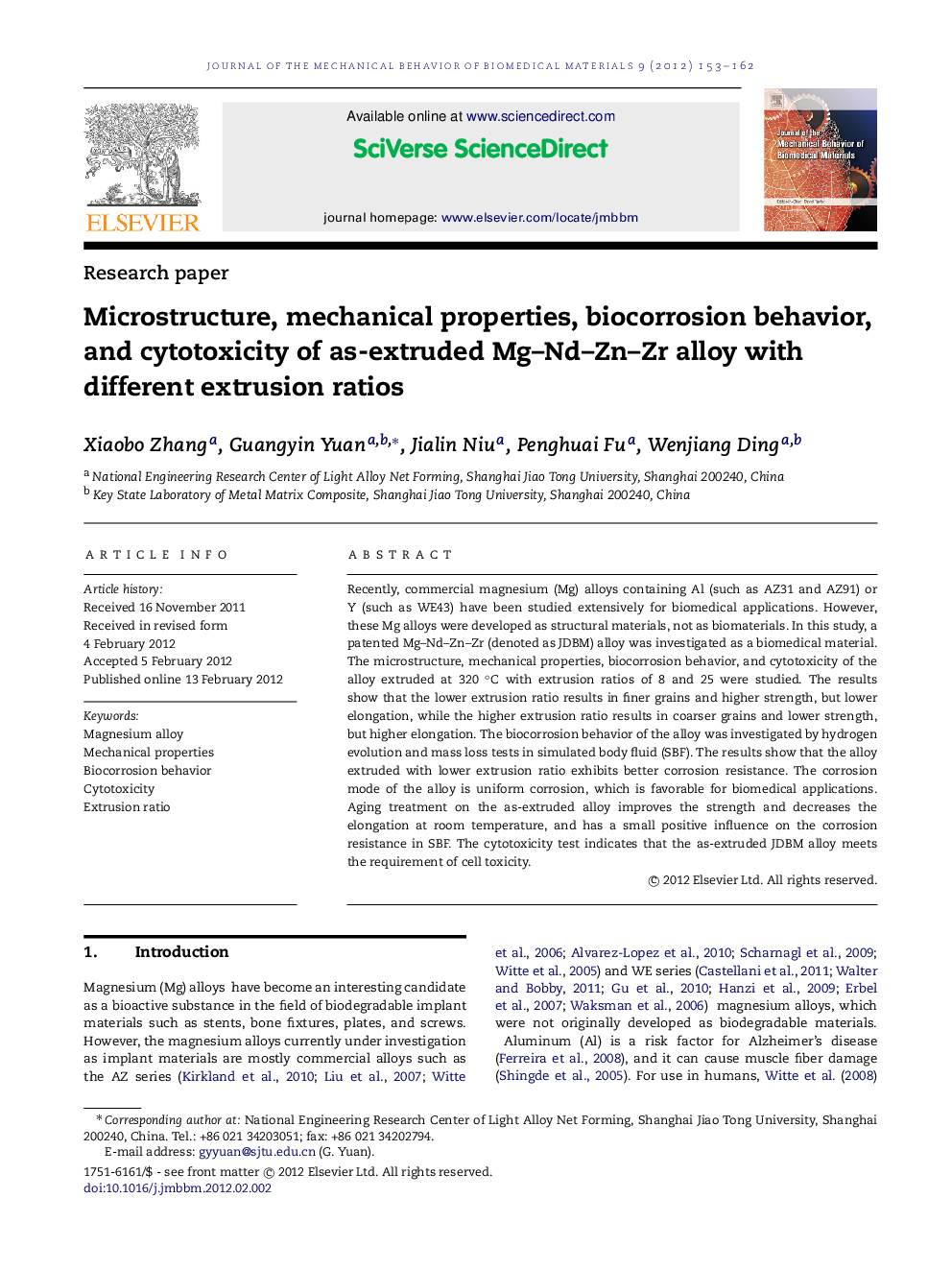| Article ID | Journal | Published Year | Pages | File Type |
|---|---|---|---|---|
| 811118 | Journal of the Mechanical Behavior of Biomedical Materials | 2012 | 10 Pages |
Recently, commercial magnesium (Mg) alloys containing Al (such as AZ31 and AZ91) or Y (such as WE43) have been studied extensively for biomedical applications. However, these Mg alloys were developed as structural materials, not as biomaterials. In this study, a patented Mg–Nd–Zn–Zr (denoted as JDBM) alloy was investigated as a biomedical material. The microstructure, mechanical properties, biocorrosion behavior, and cytotoxicity of the alloy extruded at 320 °C with extrusion ratios of 8 and 25 were studied. The results show that the lower extrusion ratio results in finer grains and higher strength, but lower elongation, while the higher extrusion ratio results in coarser grains and lower strength, but higher elongation. The biocorrosion behavior of the alloy was investigated by hydrogen evolution and mass loss tests in simulated body fluid (SBF). The results show that the alloy extruded with lower extrusion ratio exhibits better corrosion resistance. The corrosion mode of the alloy is uniform corrosion, which is favorable for biomedical applications. Aging treatment on the as-extruded alloy improves the strength and decreases the elongation at room temperature, and has a small positive influence on the corrosion resistance in SBF. The cytotoxicity test indicates that the as-extruded JDBM alloy meets the requirement of cell toxicity.
► The Mg–Nd–Zn–Zr (JDBM) alloy produced with lower extrusion ratio showed higher strength. ► The corrosion rate of the JDBM alloy slowed down significantly after extrusion. ► The JDBM alloy showed a uniform corrosion mode in SBF. ► The JDBM alloy meets the requirement of cell toxicity for biomaterials.
